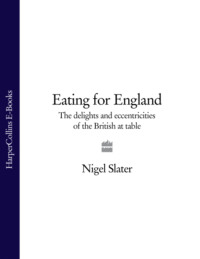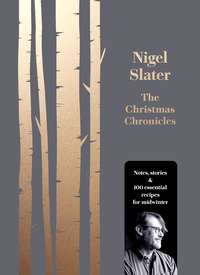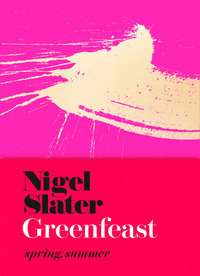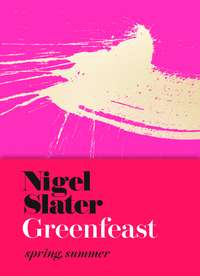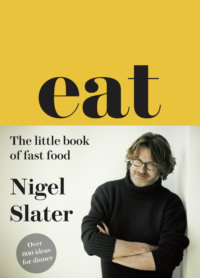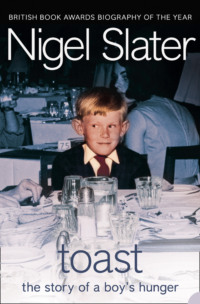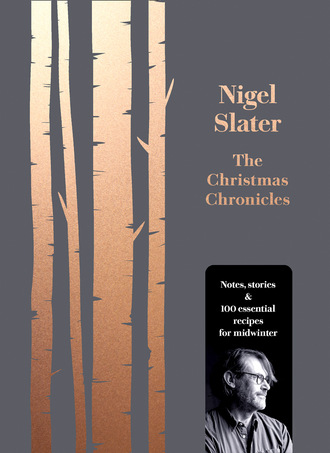
Полная версия
The Christmas Chronicles
That said, I don’t go wholly along with the idea of winter food as a source of comfort and cossetting, solace and warmth. I still want a crackling fresh salad, a plate of fruit to finish my meal, food that refreshes. I don’t drop my need for a daily bowl of leaves and herbs lightly dressed just because there is frost on the ground and woodsmoke in the air. It is all here, by the way, in these pages.
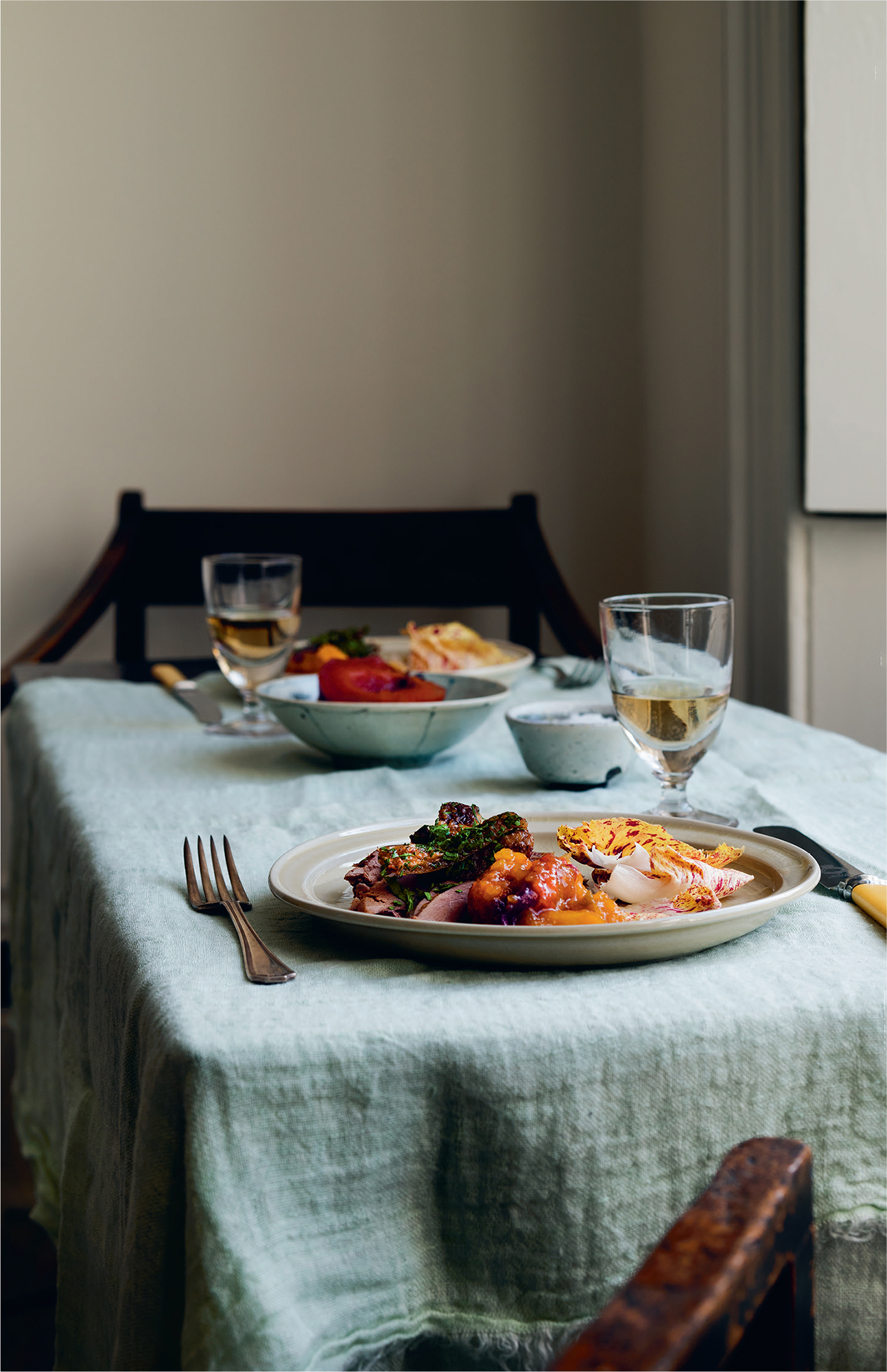
Drinking winter – raising a glass
Nothing changes quite so dramatically with the seasons as what I drink. Gone the glasses of rosé in the garden as the evening light falls, the artisan gin, cucumber and tonic. Gone too the lemon verbena tea glistening like absinthe in its fragile glass pot. Winter brings a whole new type of refreshment. Hot cider in a thick glass, frothy cocoa in a mug, buckwheat tea smelling of toast and warm rice. The drinks of winter smell different, of cloves and cinnamon, honey and fruit, rice and smoke, damson and cardamom.
I make my favourite winter drink in early autumn, so it is ready for Christmas. Damsons, squirrelled away in a bottle of gin, as happy as a fruit could ever be. (The recipe, by the way, is in Tender, Volume II.) I make cocoa thick and creamy, beaten to a froth with a little whisk, and serve it in deep mugs to keep it hot right to the end. It is part of the ritual of drinking cocoa that the first sip scalds your lips. Cardamom seeds, crushed beneath the weight of a pestle and mortar, have much to offer to a mug of hot, dark chocolate.
Apple drinks abound. Hot juice, mulled with cinnamon sticks and cloves; steaming cider with orange peel; cider brandy, sugar and cream. For the feast there are frivolous, sparkly things, sometimes flushed with pomegranate or blood orange and, occasionally, a hot toddy in a glass dotted with condensation. Even tea changes with the weather. The light green teas I drink in summer, welcome at any time of year, take a step back while the roasted teas, full of smoky notes and the humble cosy notes of toasted rice, take their place.
The alcohol level rises as the temperature dips. It is the only time of year the eaux-de-vie come out, the fruit liqueurs whose potency hides under a cloak of fruit and syrup.
My winters start with sight of the first damsons in the shops, the first bonfire lit. They end in late March when I take off to the coldest place I can find. And then, in an attempt to hold on to it all, I end up in Japan, Iceland or Finland. I eat a cup of crab soup in a hut on the harbour in Reykjavik or a thoughtful, foraged meal at one of my favourite restaurants in Helsinki, where each meal is peppered with Douglas fir or shoots of young green spruce, rowan berries picked from a tree in the churchyard, or an ice cream made from the young, green berries of juniper. Chef’s cooking, full of imagination and playfulness, and a world away from the simpler fodder I make at home. And then, full of the last tastes of winter, I step out into the cold for the last time.
The coldest winters
Some people remember summers. A holiday in Tuscany; a lunch outdoors that turned into dinner and ran long into the darkness; a picnic on the beach or the summer afternoon they lost their virginity.
I remember winters. I can trace my love of the cold months to one particular day. The winter of 1962–3, to be precise. Late afternoon, just as the sun went down and the sky slipped from apricot to scarlet to lavender. I was playing outside, a huge lump of snow that we had rolled down the silent street, getting larger and larger until we could roll it no further and which I then flattened to form a counter. I was playing shop, in duffel coat and mittens, with the food fashioned out of snow. A vast truckle of cheese from which I cut wedges to sell, a cake (of course) and snow sweets the size of pebbles. (There is a little shopkeeping in the family’s blood: in Victorian times we had a dairy in Birmingham.) My friends bought the snow cakes and then hurled them at one another as snowballs. I remember my mother bringing me in when she realised that every other kid had gone in for tea and I was still there, tending my snow shop.
The winter of 1962–3 was the coldest since 1895. I was six. It had been a particularly foggy late autumn and snow first arrived on December 12. The heaviest snow came on Boxing Day and by the 29th had drifted in some places to twenty feet deep. We had eighteen inches in Staffordshire. Villages were without power, people were stranded in their cars, the sea froze in parts of Kent and temperatures as low as –19°C were recorded. The lowest since 1814. I can’t ever remember having such fun as I did that winter, leaping into snowdrifts on my walk to school; building a snowman (carrot nose, lumps of coal for eyes) with my brother in the back garden; coming home soaked and freezing from having lost another snowball fight. It is no wonder that modern winters are something of a disappointment.
In truth Britain has had very few truly cold winters, especially in the south of the country. The coldest on record was 1684, the year the Thames froze over for two months and a fair was held on its frozen waters. The coldest of the last century have been 1940, 1947, 1963 and 1979.
Daily meteorological records began in the seventeenth century. Britain’s coldest include 1739–40, when snow started on Christmas Day and lasted to February 17, with temperatures as low as –9°C. London, usually one of the least snowy areas of the country, recorded thirty-nine days of snow. Two full months where the average temperature was less than 0°C were recorded.
1836 was one of the coldest but also a winter of floods, avalanches and stranded rail passengers. 1927–8 was a white Christmas, and with one of the heaviest snowfalls of the twentieth century. In 1933, forty-eight hours of continual snowfall were recorded.
The north, which takes the brunt of winter weather, did so especially in 1940, and was particularly cold. Four feet of snow fell in Sheffield, and the Thames froze for the first time since 1880. An ice storm hit the south on January 28.
The long winter of 1947 began in late January and lasted until mid-March. Many villages around the country were snowed in and thousands were cut off for days. Not especially cold, but a good one for snow, with not a single area of the country that didn’t record snowfall from January 22 to March 17. Many snowfalls measured 60cm or more, with Scotland recording drifts of seven metres. At one point the armed forces were brought in to rescue people.
1952–3 saw the highest winter loss of life this country has ever known during peacetime. The smog in London accounted for 12,000 deaths. 1962–3 is still the coldest I remember, and the coldest weather for 200 years. The sea froze in some parts of the country, and villages were cut off. Animals froze in their fields because farmers couldn’t gain access. A temperature of –22°C was recorded in Braemar in Scotland. The mean maximum temperature in January was –2°C, making it the coldest month since the 1800s. The Guardian reported that a farm in Dartmoor was cut off by snowdrifts for sixty-six days, and the owners had to be rescued by troops. It wasn’t until March that the temperatures climbed above –5°C. Glasgow recorded its first white Christmas since the 30s.
The scent of winter
Scent always seems particularly intense to me in winter. The smell of a toasted crumpet on a frosty morning. The sap from a branch, snapped in the garden, or of lemon zest grated in the kitchen, all seem especially vivid, heightened at this time of year. The cold air seems to illuminate scent.
Well, yes, and no. The cold actually reduces our ability to detect smells. Our body’s capacity to pick up the scent of something reduces on cold days partly because our odour receptors, all three to four hundred of them, protect themselves against freezing by burying themselves deeper in the nose. They snuggle down and are less ‘receptive’. It is like they can’t be bothered to get out of bed.
There is also less to smell in the winter, because odour molecules, denser in the cold, move more slowly in the air in the cool weather. So we actually smell fewer things. This may explain why the smells we do notice, the smoke from burning leaves or of roasting nuts, of a pot of marmalade bubbling on the hob or the Christmas tree being brought into the house, is more pronounced. Our nose is less confused with other smells.
Some things actually smell cold. Snow, obviously, but also peppermint, cucumber, yoghurt, ginger and juniper. They make us feel cool. But there are also smells that don’t actually smell of winter, but simply make us think of it, things that we connect with this season alone. A tray of mince pies in the oven; an orange studded with cloves; dumplings swelling in the damp wood of a Chinese steamer; or a shallow dish of potato Dauphinoise, calm and creamy, baking. There are the winter herbs, of course, bay, rosemary and thyme, the aromatics that weave their magic in stock or meat juices over time rather than the instant hit of torn basil or coriander. The comforting ‘sugar smells’ of warm treacle, toffee, butterscotch and liquorice. Of marmalade and caramel.
I don’t like the smell of mulled wine, it reminds me of cheap pot-pourri. But the zest of an orange mingled with the warmth of cloves is certainly a part of any catalogue of winter scents. All the more when it comes in the form of a Seville orange. The lumpy, bitter sort needed for classic duck à l’orange and for marmalade. More pleasing, I think, is that of orange blossom, preferably caught on a breeze rather than from a bottle. (Too much, it reminds me of Savlon, and childhood grazes and cuts.) If ever you are in Sorrento in Italy in the winter, head for the nearest lemon tree, often overhanging the path, and its white, star-like blossom. There is an olfactory treat in store.
One of the loveliest things anyone has said about my home is that it always smells nice. I hardly ever notice it, to be honest, but thinking about it they are probably right. In winter there will almost certainly be woodsmoke and beeswax polish.
Most of the things designed to make our houses smell festive are uniformly nauseous. They are the very essence of the fake Christmas. Those ‘Yule-scented’ candles, usually red, that smell of cinnamon and orange, or plug-in room fragrances that smell like cheap air-freshener. Hideous. A real Christmas will smell of itself without us trying to evoke it.
The tree, of course. The scent of the tree will vary according to the variety. The smell comes from a cocktail of compounds, including a-pinene and ß-pinene, in which conifers are particularly abundant, and bornyl acetate, known as the heart of pine. Balsam, Douglas and Nordmann firs are particularly high in the balsamic and camphor compounds. The reason the tree smells so strongly when you first bring it into the house is because the sap continues to rise in a freshly-cut tree. As the cut tree ages, the sap stops moving and the smell fades.
There is a difference between the smell of winter and winter smells. The latter tend to be induced by us – the smell of a potato baking, of logs burning or of hot chocolate. But winter has its own smell: step outside on a frosty morning and you are smelling the cold. That scent of smoke we detect despite the lack of a fire nearby is due to the fact that smoke doesn’t rise as well in cold air, so any there is will stay closer to the ground.
Evergreens, freshly cut, give subtle seasonal notes. Holly, mistletoe and laurels all work. Eucalyptus will make your home smell like granddad’s chest rub. I would have to add the sweet, Barbara Cartland fragrance from a bowl of hyacinths too, though really only from a nostalgia point of view. My father always insisting on having a bowl of them ready in time for Christmas. He would force them in a dark cupboard under the stairs, then in the airing cupboard. He usually managed to get them to perform on cue.
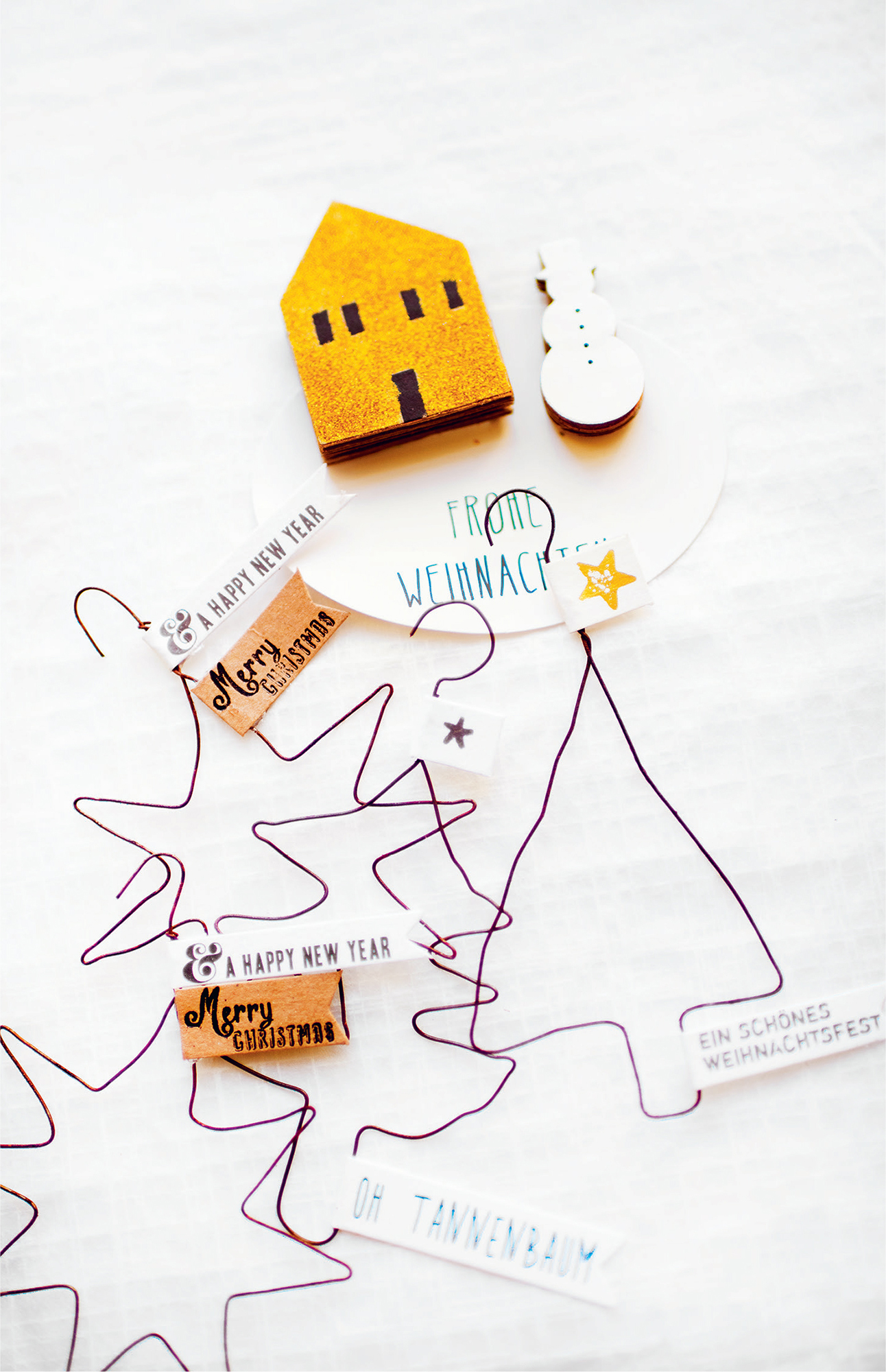
Bay shouldn’t have come as a surprise to me, being one of the more fragrant evergreens, but I have only just realised its seasonal notes. The essential oil made from its leaves (I am talking bay laurel – Laurus nobilis – here) is rather like having a little bottle of Christmas around. A few drops on a saucer or an oil burner, or dribbled on to a few dry leaves and twigs in a bowl, will scent the house subtly for several hours. There are some good bay candles around too.
Fire
Fire has always been at the heart of it all. The place where everyone gathered, for warmth and for safety. Flames to warm us from the cold, but also to ward off danger. Flames to keep wild animals at bay. Flames to sit round and read, a place for conversation. Now a real fire is a rare and wonderful thing. It is hard work: the carrying of logs, the lighting of kindling and taking the ashes out, but nothing can match it.
A fire is a magical thing. There are those who worship them, literally. Zoroastrians, some Vedic branches of Hindu religion, the Romans and the Greeks have all at some time worshipped the fire or the hearth. The purity of the fire, its ability to render food from the inedible to the edible and the protection it affords, are all worthy of worship.
I have two fires burning at home. On a winter’s night, the room changes the instant they are lit. Bricks and mortar transcend from house to home. The fire lit, the mood of the room changes too. Shoes are removed, feet are put up on sofas, we tuck ourselves up. In truth, after a day’s work, we sleep too. Friends joke that within ten minutes of me lighting the fire, they are asleep. Cosy.
There is much to watch in the flames. We say they ‘dance’. And with good reason. The flames flicker and wave, float and soar as the mood takes them. Sometimes the embers are even more beautiful than the flames. I could watch them for hours.
We shouldn’t ignore the ashes. You can use a small amount of them on the garden. But they should be ashes from wood, not coal, and shouldn’t be used near blueberries, azaleas or potatoes, which don’t like a high pH. Burned wood doesn’t contain nitrogen, but it is a source of potassium, phosphorus and calcium. Useful for raising the pH of the soil if it is low, by which I mean below pH 6.
There is a little Japanese onsen I visit. It takes a while to get there, as there is no rail connection. The wooden building is hidden in the hills, and is probably my favourite place on Earth. It is undeniably beautiful, with its lovingly polished wooden floors and moss-covered garden. What sets it firmly as the place where I want my ashes scattered is the constant scent of smoke. It filters through the house but also through the gardens – little trails of blue-grey cross your path as you walk along the stone paths, or warm the wooden arbours where you sit and read.
What we burn affects the smell of the fire and also the heat it gives. My parents burned coal and logs. I have never liked the smell of a coal fire, preferring to use logs. You need kindling to light a fire – thin, crisp sticks of wood that are, crucially, dry. A few sheets of newspaper rolled into loose balls tucked among them, and then some larger logs to burn slowly. The reason most fires go out is because the logs are too large, or there is not enough air. A loose arrangement of scrunched paper, kindling and small logs, no thicker than your arm, is a good start. Newspaper lights more easily than the paper from glossy magazines. (My stepmother used to roll up newspaper, then tie a loose knot in each roll. Worked a treat.) A taper, if you have such a thing, is better, safer, than a match or a lighter.
Although my parents and grandmother kept a fire going, almost constantly, in the hearth, the idea is not a practical one for most of us. A wood-burning stove is one answer. The flames hidden behind glass, they can be left burning safely while you are out. They are clean and easy to deal with. They are the heart of many a Scandinavian and Japanese home, and are becoming popular in Britain too. A wood-burner has a constant glow, the low golden flame that greets and warms and toasts us. It is my next project.
Fire has always been precious, particularly when it was the only form of heating or cooking. Therefore taxable. In 1662, on May 19, a hearth tax was introduced, where householders had to pay two shillings for each hearth. Payment was twice a year, once at Michaelmas and again at Lady Day, March 25. The poor and charitable institutions were exempt. The tax was abolished by William III in 1689. Good for him.
For me the cold months are the best of times. And at the heart of those months lies Christmas.
Celebrating Christmas
Christmas is celebrated by Christians and non-Christians alike. It is a cultural event as much as a religious one, and its history is confused. Many of the festival’s observances date from pre-Christian times, and those who celebrate it as a purely religious event might be surprised to find how much of the festivities hails from pagan times. We celebrated winter long before we celebrated Christmas. (Saturnalia was the Roman festival in honour of the God Saturn, with feasting lasting from December 17 to the 23rd.) Happily atheist, I celebrate Christmas as much as anyone, with food and gifts and, yes, carols, but I fully accept that much of my own celebration has a religious history.
I go along with the religious details of Christmas because they have become interwoven with the cultural side of the festivities. The Nativity is as much a part of Christmas as Santa Claus and the pagan habit of bringing holly and mistletoe into the house. It is almost impossible to separate the pagan from the pious, and why would I want to anyway when December 25 was chosen simply because it landed in the middle of what was already a pagan festival?
Christmas is a vast steaming pudding of Christianity, folklore, paganism, tradition and commerce. Those of us who are part of a tolerant, open-minded and intelligent society can make our Christmas whatever we want it to be. To put it another way, we can have our cake and eat it.
The best of Christmases, the worst of Christmases
We tend to remember Christmases with exemplary clarity. Something unusual that happens over these twelve days at the heart of winter is unlikely ever to be forgotten. Even the most innocent event is almost guaranteed to be re-lived with a certain annual glee. My own catalogue of unlikely Yuletide events has involved a Christmas Eve where I forgot to tell the family I was coming home, only to find they had left for the week (I was taken in, waif-like, by generous neighbours). The year the cake sat half-iced because I had run out of icing sugar. The Christmas morning I realised the goose was too long for the oven and had to be cut in half. Then there was the time the cats pulled the ten-foot tree on to the floor, smashing my much-loved collection of decorations (and frightening the life out of themselves into the bargain). Then there was the Christmas Mum died.
For me Christmas is the heart and soul of the cold months, the jewel in the crown of midwinter, a time to feast and to give. But it is, after all is said and done, just a few days that sit at the heart of the season. Three months of our year in which to offer warmth, welcome and something good to eat to all.
Конец ознакомительного фрагмента.
Текст предоставлен ООО «ЛитРес».
Прочитайте эту книгу целиком, купив полную легальную версию на ЛитРес.
Безопасно оплатить книгу можно банковской картой Visa, MasterCard, Maestro, со счета мобильного телефона, с платежного терминала, в салоне МТС или Связной, через PayPal, WebMoney, Яндекс.Деньги, QIWI Кошелек, бонусными картами или другим удобным Вам способом.




